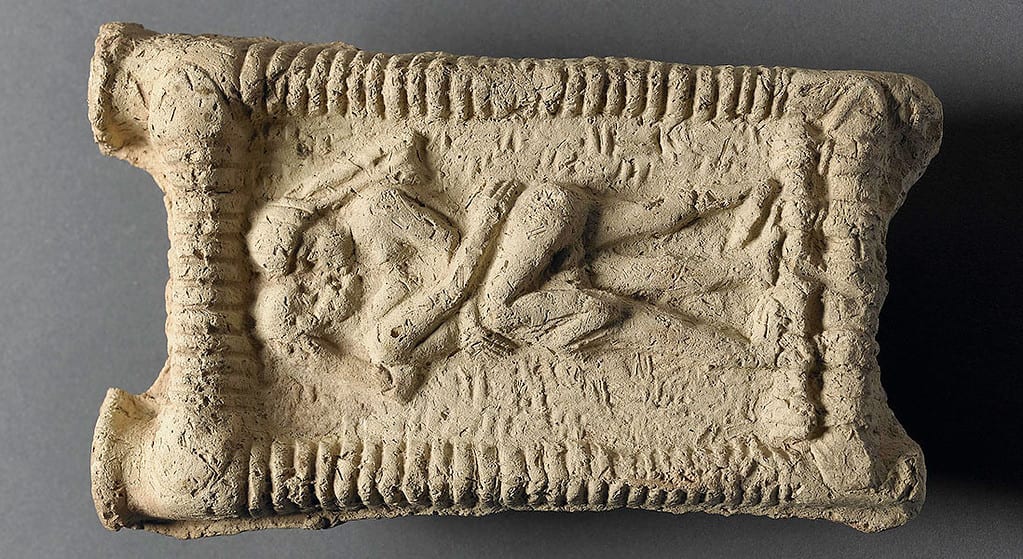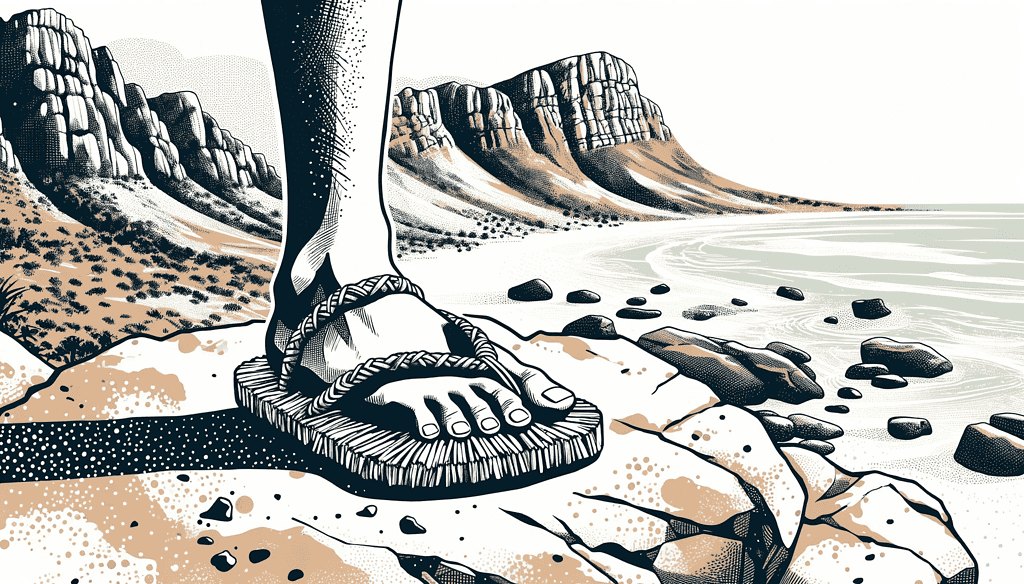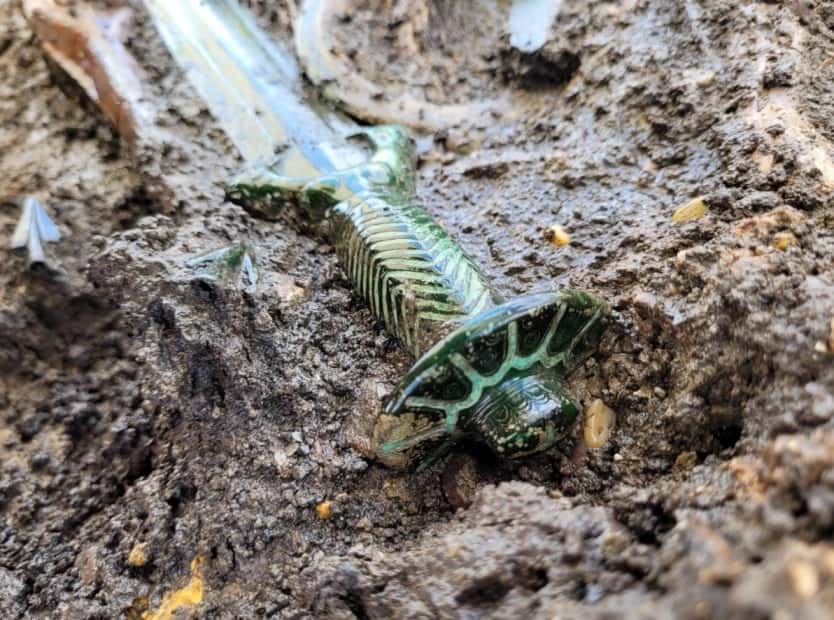Archaeology, the study of the human past using material remains, gives us plenty of surprises every year. Researchers (often quite literally) uncover how people lived in long-gone times, through the remains of what people created, modified or used. Sometimes, artefacts and features can only give us evidence that an ancient civilization existed at all. Then there are the times when we find things that were entirely unexpected.
Here are seven of the most surprising archaeological findings from this year.
A much older first-lip kiss
Have you ever wondered when lip kissing started? Most studies have suggested it originated somewhere in India in 1,500 BC. But now, researchers have traced lip kissing’s origins back to Mesopotamia, over 1,000 years earlier. They looked at writing on clay tablets and found mentions of kissing as early as 2,500 BC.

The researchers found from reading and viewing tablets that, after intimacy, couples engaged in kissing primarily on the lips rather than exploring other parts of the body. Kissing may have also played an unintentional role in spreading microorganisms much faster. Some Mesopotamian texts describe an illness with similar symptoms to the herpes virus.
Celestial iron technology
Objects exhibited at museums sometimes have more stories to tell. This was the case of a Bronze Age arrowhead that has been part of the collection of the Natural History Museum of Bern, Switzerland for decades. In August, researchers found that the arrowhead was intricately carved from a meteorite that crash-landed on Earth 3,500 years ago.
X-ray tomography and gamma spectrometry showed that the arrowhead had unusual aluminum-26 isotopes, not commonly found on Earth, along with traces of iron and nickel alloy consistent with meteoric composition. The study also showed grind marks from the shaping process, as well as remnants of tar used to fix the point of the arrow.
Flip-flops from the Stone Age
People might have started using basic footwear as early as the Middle Stone Age, a period spanning from 75,000 to 150,000 years ago, according to a study earlier this year. Researchers looked at trace fossils in South Africa and found evidence that suggests early humans used to wear simple foot protection, similar to flip-flops, much earlier than we thought.

Previous studies had suggested humans started wearing shoes around 40,000 years ago based on observations of shrinking toe bones due to shoe-wearing. However, the history of footwear goes back even further. Early humans in South Africa likely crafted flip-flops to walk on the beach, which has sharp rocks, preventing severe injuries.
Ancient grenades in China
Archaeologists in China uncovered an ancient tools and weapons warehouse, which included dozens of stone grenades. They might not seem like much but they had a big impact on the battlefield. Each grenade had a round hole in the center for gunpowder. After filling, they could be thrown out, hitting the enemy and causing an explosion.
Similar weapons have previously been unearthed in China, but not around the Great Wall, where the warehouse was located. Archaeologists have found over 400 comparable stone grenades, with many dating back to the Ming Dynasty (1368-1644). The history of bombs in China extends even further, with people using grenades as far back as the 10th century.
The former murder capital of England
It might be home to one of the world’s leading universities, but Oxford was also once the murder capital of late-medieval England. A study earlier this year mapped medieval England’s known murder cases and found that the homicide rate in Oxford was four to five times higher than that of London or York, caused largely by young male students.

These students didn’t have much social control and lived in an environment with easy access to weapons, alcohol and sex workers, the researchers explained. Many belonged to fraternities called “nations” and this was an additional source of conflict. All these elements came together and created the ideal setting for seeding violence.
A perfectly preserved octagonal sword
Archaeologists have unearthed an astonishingly well-preserved Bronze Age sword in Bavaria, Germany. The sword, over 3,000 years old, dating back to the 14th century BC, still glimmers, showcasing the remarkable metalworking skills of the its makers.
Such swords, known as ‘Achtkantschwert’ in German, were crafted only in two locations in Germany and required precise casting and decoration techniques. Despite its potential as a functional weapon, the absence of cut marks suggests it might have been used for ceremonial purposes.
This exceptional find, currently under examination, highlights the advanced technological and cultural aspects of the Urnfield Culture, adding a fascinating chapter to our understanding of Bronze Age Europe.

Ancient, impressive water pipe system in China made by an egalitarian society
The remarkable discovery at Pingliangtai, a 4,000-year-old walled site in China, challenges traditional archaeological beliefs about social structures and technology. Researchers uncovered an advanced ceramic drainage system, featuring interconnected pipes, which is the earliest of its kind in China. This system was designed to manage monsoon waters, a feat of engineering and planning achieved without a centralized authority.
Unlike neighboring cities that show clear social stratification, Pingliangtai exhibits a uniformity in housing, indicating an egalitarian society. This discovery questions the widely accepted Wittfogel hydraulic hypothesis, which links large-scale water management projects to autocratic, centralized states.
This challenges the notion that only hierarchical societies with centralized power could organize and execute such complex projects. The Pingliangtai community’s achievement demonstrates that alternative social structures can also lead to significant technological and infrastructural advancements.
Scratching the surface
Archaeologists have been digging up moments and collecting artefacts for thousands of years. However, there’s still a lot we don’t know yet about cultures and societies from our distant past. These five surprising findings are just one small part of many other studies that have taken place so far this year, which we regularly cover at ZME Science.


